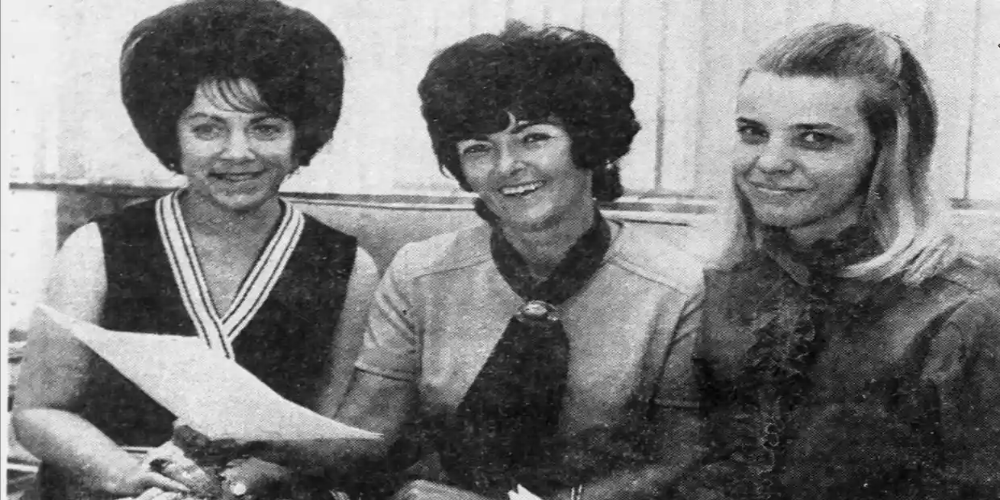For decades, the woman pulled from the Nation River in 1975 was a mystery – but thanks to investigative genetic genealogy, she and the suspect were finally identified,
For nearly five decades, little was known about the woman whose body was pulled from the Nation River, 90 miles west of Montreal, on 3 May 1975.
She was white, with shoulder-length brown hair recently dyed strawberry blond and well-manicured nails. But she had no identification nor any clear identifying features.
Over time, the woman – known simply as the Nation River Lady – became “one of the oldest unsolved and most unique” cases the local police force had ever dealt with, stumping successive generations of investigators.
Last week, after 47 years, Ontario provincial police announced that the Nation River Lady had been identified as Jewell Parchman Langford, a prominent business person from Jackson, Tennessee, in a breakthrough marking one of the first times investigative genetic genealogy has been used in Canada.
Police also said they had charged Rodney Nichols, 81, with murder in connection to the case. Nichols, who now lives in Florida, is now the subject of an extradition request.
“Today, we can announce we have provided a resolution to her family and the communities in eastern Ontario that have lived with this unsolved investigation,” the deputy commissioner, Marty Kearns, said at a virtual news conference.
Langford made the journey to Montreal in April 1975, and investigators now believe she stayed with Nichols in the city, but despite promises to keep in touch with her family, she never returned.
“My grandmother sold everything, she spent every dime she had hiring private investigators trying to find my aunt,” Denise Chung, Langford’s niece, told CBC News.
“I know that my grandmother constantly called the local FBI … pushing and pushing because she did not want them to forget about Aunt Jewell, and she did not want to ever quit searching, and she did not quit searching until she passed away.”
When a local farmer discovered her body in the Nation River, police suspected the victim had been thrown into the river from a highway bridge – but never made the link to Langford.
In the following 47 years, efforts by authorities to identify the woman and any potential suspects were unsuccessful, despite releasing forensic drawings, a 3D facial reconstruction and appeals to the public.
Eventually, investigators were able to obtain a DNA sample and created a “a very effective and clear” profile.
In 2019, the sample was shared with the DNA Doe Project, a US non-profit organization that assists law enforcement by using forensic genealogy to find DNA matches in cold cases.
“As with the over 100 cases that have been DNA Doe projects, this was a very bittersweet development,” Bryan Worters, a volunteer with the group, told the Guardian. “The crux of what we’d like to be able to do is give these individuals and these families a sense of restorative justice. But it’s also important for them to come to terms with what happened and to be able to heal.”
Worters says that investigative groups like DNA Doe do not have access to large DNA databases like 23andMe. Instead, they are forced to draw on small pools like GedMatch Pro and Family Tree DNA, which have far fewer samples. Investigators were helped by the fact that Langford was from the US, which contributes most of the DNA samples to databases. In cases where victims are from marginalized groups or are recent immigrants, teams have far less to go on.
He points to the case of woman found in a marshy field near the Darlington nuclear plant in Bowmanville, Ontario, in 2006 and another involving a woman who died of carbon monoxide poisoning from her camp stove in 2009. “Somewhere out there, there are two families who miss their loved ones,” he said. “We’re working to change that.”
The breakthrough in Langford’s case also comes amid a shift in how these cases are seen by the public, said Worters.
“For so long society has been interested in perpetrators with a heavy focus on the person committing these atrocities – and so little on the victims and the loved ones that they’ve left behind,” he said. “Jewell Langford was a businesswoman. She was loved. She was revered by her community and when she went missing, that was felt by everyone.”
For decades, an empty grave was held for her in Tennessee, with a marker reading: “Missing, but not forgotten.” Langford was returned home after police made a positive identification. Her grave marker now reads: “Finally home and at peace.”
Source : The Guardian


